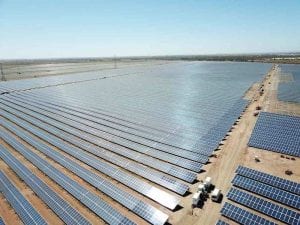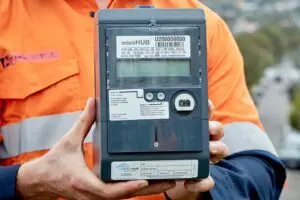A change to energy market rules promises to make it easier for large-scale renewables and battery storage projects to connect to the grid, by lowering a hurdle put in place in the wake of South Australia’s 2016 “system black” event.
The Australian Energy Market Commission has published its final determination on reactive current access standards for inverter-based resources – wind farms, solar farms and big batteries – following two requests for a change to the rules.
The AEMC says it has made a “more preferable” final rule that lowers the reactive current fault-response capability that connecting inverter-based resources need to provide, while also clearing up a few grey areas still lingering in the current standards.
“This will facilitate greater efficiency in the connection requirements of inverter-based resources (IBR), such as batteries, wind and solar, while also ensuring the security of the power system,” the determination says.
“The final rule will also support more flexible negotiation on the reactive current capability that inverter-based generators have to provide to ensure voltage stability is maintained at least cost.”
The rule change essentially loosens off some of the tightening up of requirements from wind and solar farms that was made in the wake of the 2016 “system black” in South Australia – when massive storms tore down multiple transmission towers and three transmission links and triggered a state-wide blackout.
Described in the aftermath as a “black swan event” – rare enough that building a grid capable of withstanding it would be very expensive and largely unnecessary – it nonetheless had some unfortunate impacts on Australia’s renewable energy progress.
As RenewEconomy editor Giles Parkinson noted here, it “quickly became a political football and an ideological battleground between parties pro-renewables, and those against,” the latter including much of the Coalition federal government of the time.
It also led to a more conservative approach from the market operator, which included a push for – among other things – tighter restrictions on the requirements from wind and solar farms in response to disturbances to the grid.
More than half a dozen years later, the AEMC concedes that the reactive current capability required from solar and wind farms in order to connect to the grid might have been set unnecessarily high.
The Commission’s final rule will from April 27 onward require generators to provide a value greater than zero per cent of their maximum continuous current per unit change in voltage.
“This will require inverter-connected resources to provide some response at the connection point and also ensure that they do not absorb reactive current at the connection point during under-voltage faults and do not inject reactive current at the connection point during over-voltage faults,” the determination says.
This differs from the draft determination, that proposed providing the flexibility to agree to a level of reactive current response below zero – a change ruled out due to its failure to set any effective minimum access standard.
But the final determination does allow some flexibility on determining appropriate levels of response, and removes the need for some projects – mostly wind farms – to invest in expensive extra kit, such as synchronous condensers, often to little real effect.
Or as the AEMC puts it: “This investment in auxiliary equipment is not always likely to support the achievement of system security outcomes at least cost and the Commission considers that there should be more flexibility to agree to a more efficient level of reactive current provision by connecting resources.”
Ultimately, it looks a lot like there is a more collegiate approach to energy market regulation being taken, where all parties can agree to a common coal – a well functioning renewables grid – and work together towards it.
The AEMC says it also expects the rule change to lead to network companies playing a more proactive role in planning for and investing in ways to ensure stable voltage levels during steady-state conditions and maintain adequate reactive power reserve margins to respond to faults.










